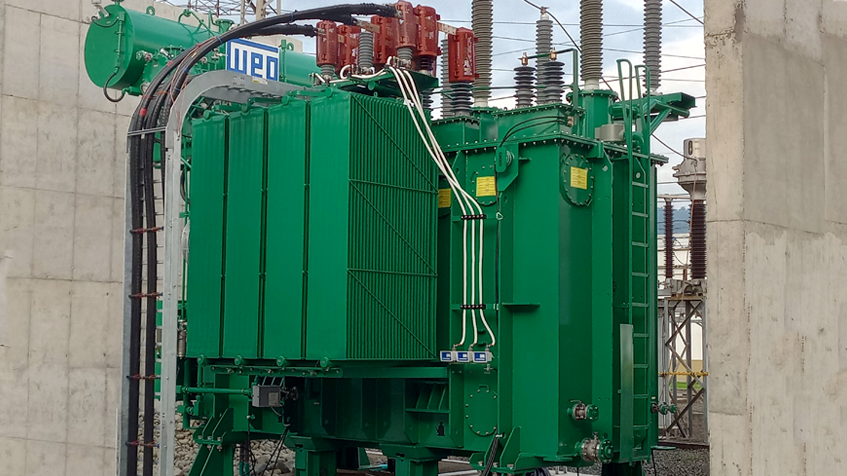In October 2020, the Colombian government formalized the sale of the ELECTRICRIBE electric company to the giants EPM and Energia de Pereira, renamed respectively AFINIA and AIR-E. Together, the companies provide energy transmission and distribution services to more than 10 million Colombians, representing around 25% of the country's energy mix.
To conduct the projects started in 2020 and completed in 2022—consisting of 29 substation expansions delivered to twenty-one cities in seven different states—WEG supplied materials, equipment and expertise, in addition to selecting a team with multiple specialties. The team was composed of civil engineers, electricians, environmental engineers, occupational safety engineers, professionals with expertise in logistics, supplies, substation control protection systems, commissioning and construction management, totaling about 70 WEG professionals. The project also generated local employment on demand, with contractors and other companies, involving a total of approximately 700 people at its peak.
During this period, in the design, supply, assembly and commissioning phases, we had the support of teams of specialist engineers from our customers Aire and Afinia, who provided great progress in the projects and kept the commissioning in service with the highest quality standards and safety, reinforcing the purpose of making everyone's life better every day.
As part of the scope of supply, WEG manufactured sixteen transformers (with powers between 20 and 60 MVA – 110 kV class) in the plants in Brazil, and 16 transformers (with powers between 12 and 20 MVA – 13.8 KV and 34.5kV class) and the entire line of cubicles and electrical panels manufactured at WEG Colombia's manufacturing plants. In addition, it provided other equipment and services for the solutions through the Colombia Substation Business Center, where three solutions with GIS technology (Gas Insulated Substation) stand out—these are substations encapsulated in SF6 Gas. It is also worth mentioning the adaptations in transmission lines and the many interfaces with existing installations.
For WEG, this project posed several challenges, as it was necessary to revitalize an old power transmission system without technological updating and no historical data for preliminary studies and basic projects, leaving it to our team of engineers to create and structure everything from the scratch. Adversities in relation to health and social issues, inputs, raw materials, logistics and compliance with delivery deadlines from the various suppliers had to be overcome, considering that the project was conceived in the midst of the COVID-19 pandemic.




